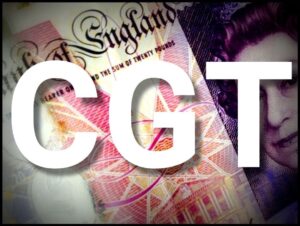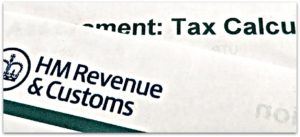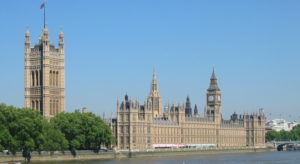 In the Autumn Statement from the Chancellor of the Exchequer, Jeremy Hunt, today (17th November 2022), it was announced that the capital gains tax (CGT) allowance was being reduced with effect from next year.
In the Autumn Statement from the Chancellor of the Exchequer, Jeremy Hunt, today (17th November 2022), it was announced that the capital gains tax (CGT) allowance was being reduced with effect from next year.
Category Archives: UK Budget
Higher Rate Tax Bracket Changed
 The Chancellor of the Exchequer, Jeremy Hunt, has announced in his Autumn Statement today, 17th November 2022 (otherwise known as the autumn budget) that the higher rate tax bracket would change – that is, the level at which people start paying the top rate of 45% tax will change to £125,140. Continue reading Higher Rate Tax Bracket Changed
The Chancellor of the Exchequer, Jeremy Hunt, has announced in his Autumn Statement today, 17th November 2022 (otherwise known as the autumn budget) that the higher rate tax bracket would change – that is, the level at which people start paying the top rate of 45% tax will change to £125,140. Continue reading Higher Rate Tax Bracket Changed
Personal Allowance Freeze for 5 Years

In the budget today (3rd March 2021) the Chancellor of the Exchequer, Rishi Sunak, confirmed the the personal allowance for 2021/22 would increase to £12,570 as had previously been confirmed.
However, he also confirmed that, in order to start to claw back some of the massive spending that needed to happen in order to finance payments during the coronavirus pandemic, the personal allowance would remain frozen at that level until April 2026.
The personal allowance is the amount of money that can be earned before tax is paid. Once the level is passed, anyone who earns over £12,570 will need to pay tax at 20% for the amount of earnings between the personal allowance and the higher rate tax bracket.
In addition to this, the 40% tax bracket starting point, which will be increased slightly to £52,270 on 6th April 2021, will also be frozen for 5 years and will not be increased until at least 2026.
This means that as people start to see pay rises over the coming years, they may be pushed into a situation where they pay more tax or move into a higher tax bracket.
This announcement came alongside confirmation that the furlough scheme will be extended as will the SEISS scheme for the self-employed, plus there will be an extra £20 a week for those on Universal Credit and Working Tax Credit for the first 6 months of the 2021/22 tax year.
The stamp duty holiday will also be extended to the end of June with a partial amount also being available until the end of September.
The Capital Gains Tax allowance was also included in the budget and it was confirmed that this would increase to £12,300 for the tax year 2021/22 and then also remain at that level for 5 years until 2026.
Capital Gains Tax (CGT) Allowance 2019/20
The Capital Gains Tax (CGT) annual exempt amount is the amount of gains that you are allowed to make before paying tax on those profits.
Capital Gains Tax is paid when you sell or dispose of assets such as personal possessions worth more than £6,000, property that is not your main home, shares or business assets.
CGT is based on the amount of profit that you have made, not on the selling price.
Each year the CGT annual exempt allowance is increased in line with the rise in the Consumer Prices Index, rounded up to the next £100.
In 2018/19 the CGT allowance was £11,700.
In 2019/20 this will be increasing to £12,000.
The law also provides that the annual exempt amount available to most trustees of settlements is one half that due to individuals and so this will be £6,000 for the tax year 2019/20.
For details of all current tax rates that we monitor, please see this page.
2019 Personal Allowance

In the 2019 Budget today Philip Hammond announced changes to the personal allowance for 2019/20.
It had previously been announced that the plan was to increase the tax free personal allowance to £12,500 and the higher rate allowance threshold to £50,000 from April 2020.
There had been rumours prior to the budget that the Chancellor would have to delay the increase in the personal allowance in order to fund increases to the NHS.
Mr Hammond commented on this himself and said that he had been advised that the least painful way to add some funding to the NHS promises was to do exactly that.
However, he also said that this was not his idea of ending austerity (which was part of the budget headlines) and so he would not be doing that. In fact, he said, he would actually bring forward the increases in the personal allowance levels by a year and implement those increases from April 2019 instead of April 2020.
So the personal allowance from April 2019 will be £12,500 which is increased from £11,850 for 2018/19, an increase of £650 and a saving of £130 a year for basic rate taxpayers.
Personal Allowance 2018/19

Budget 2017
The Chancellor Philip Hammond has announced in his 2017 Budget today that the UK personal allowance 2018/19 will increase with effect from April 2018 to £11,850.
This is the amount that people can earn before having to pay any tax on earnings above that level.
An increase of £350 in the personal allowance means an extra £70 a year (or £5.83 a month) in the pocket of a basic rate tax payer.
Currently the personal allowance sits at £11,500 for the year 2017/18 and so this is an increase of 3.04%.
The eventual aim that has been proposed by the government is to get the personal allowance to £12,500 a year.
The higher rate tax bracket will also be increase from £45,000 to £46,350. The aim is for this to be increased eventually to £50,000.
You can find all of the current personal allowance rates in the tables on this page (these will be updated as they are announced).
Also announced in the Budget today was the increase in the National Minimum Wage of 4.4%, rising from £7.50 an hour to £7.83 an hour with effect from April 2018.
October 2018 Update
Check out the change to the personal allowance for 2019/2020 here.
Personal Allowance Increased for 2017/18
The Chancellor of the Exchequer, George Osborne, today announced in his March 2016 Budget an increase in the personal allowance for 2017/18 which for 2016/17 stands at £11,000.
The personal allowance for 2017/18 has been set at £11,500 which is an increase of 4.5% over the previous year. This increase is to keep in line with the plan that the Conservative Party announced in the election manifesto to increase the personal allowance by the end of their term to £12,500.
This single level personal allowance now applies to people of all ages, including those over 75, as the age allowance for pensioners has been removed so that everyone is entitled to the same personal allowance.
New Dividend Tax Introduced in 2015 Budget
In recent years there have been a lot of changes to personal allowances and indeed other allowances that affect personal income. Not only has the personal allowance increased significantly and more recently a tax free savings allowance was introduced, now there is another change to the tax charged on dividend payments to individuals.
The changes are a little bit complex and will affect quite a lot of people receiving dividend income, and not always for the better.
There is a new allowance of £5,000 per person per year on dividends which is tax free, but any dividend income over this amount will be taxed at a higher rate than previously, depending on the tax bracket of the individual.
A basic rate tax payer will need to pay 7.5% tax on amounts over £5,000, a higher rate tax payer will need to pay 32.5% and an additional rate tax payer will need to pay 38.1%.
These rates are effective from April 1016.
It may be useful to note that the new £5,000 savings tax free rate is in addition to this (for those who have low enough incomes) and so it may be worth getting some advice as to whether some shares should be switched to a different investment vehicle to minimise tax.
Full Details of Summer 2015 Budget Inheritance Tax Changes
In the summer 2015 budget this week, George Osborne introduced some major changes to the rules on inheritance tax, so that properties were given an additional allowance that would take a lot of them out of the inheritance tax limits.
The current Inheritance Tax threshold is £325,000. This will remain but in addition there will be an allowance for family homes that are passed on to direct descendants (children and grandchildren). This new allowance will reach it’s maximum level of £175,000 in 2020/21 but will be tapered from 2017 onwards until it reaches that rate.
So a summary of the new allowance in tax years is as follows:
2017/18 – £100,000
2018/19 – £125,000
2019/20 – £150,000
2020/21 – £175,000
The nil rate band will then increase in line with the Consumer Price Index from 2021 onwards.
The allowance can be passed between couples so that when the first partner dies that allowance is passed on to the surviving spouse so that when they die the allowance is effectively doubled. Thus when the second partner dies the allowance could be worth up to £350,000. Add this to the standard Inheritance tax allowance (that can also be passed between spouses) and this would give a total value of £1m (remembering that £350,000 of this amount can only be held against property).
The existing £325,000 allowance can be used against any assets that the deceased holds, including property.
There has also been a clause introduced that means that if someone downsizes from their main residence, the value of their previous home can be taken into account. For example, an individual might choose to downsize from a home worth £250,000 to a home worth £150,000. They could still benefit from the maximum allowance of £175,000 in 2020-21 if they leave the home and £25,000 of other assets to direct descendants.
There will also be a tapered withdrawal of this new Inheritance Property Allowance for properties worth over £2m. The tapering will be at the rate of £1 for every £2 in value over £2m, for example:
Property worth £2,100,000 – IHT Property allowance is reduced by £50,000.
Therefore, property worth £2,350,000 (after 2020/21) will not have any property allowance attached to it.
E&OE
40% Tax Band Increased for 2016/17
The chancellor George Osborne this week announced in his extra budget that the figure at which the 40% tax band kicks in will be increased from 2016 to £43,000 from the current level for 2015/16 of £42,385.
The 2015/16 figure of £42,385 is made up of the £10,600 personal allowance and the 20% tax band amount of £31,785.
Next year’s figure is made up of the new £11,000 personal allowance and a 20% tax band amount of £32,000.
Whilst the personal allowance had been increasing, the 20% tax band allowance had been decreasing in recent years so this is the first increase for a while which brings it back up to the level it was in 2013/14.
